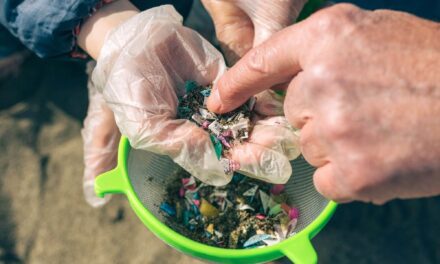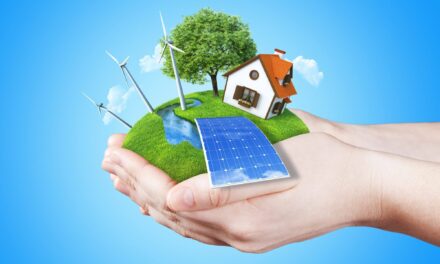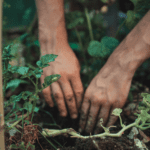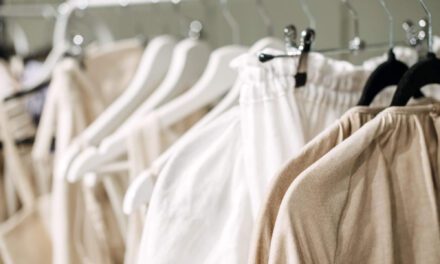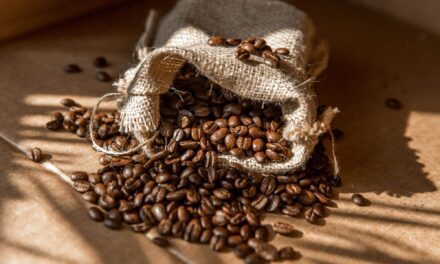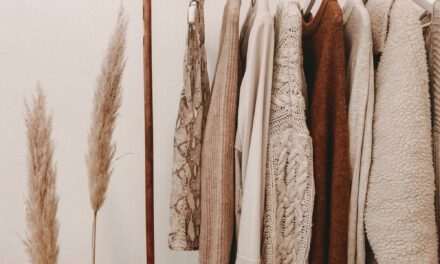
Discover 6 Sustainable Fabrics: Eco-Friendly Fashion Guide
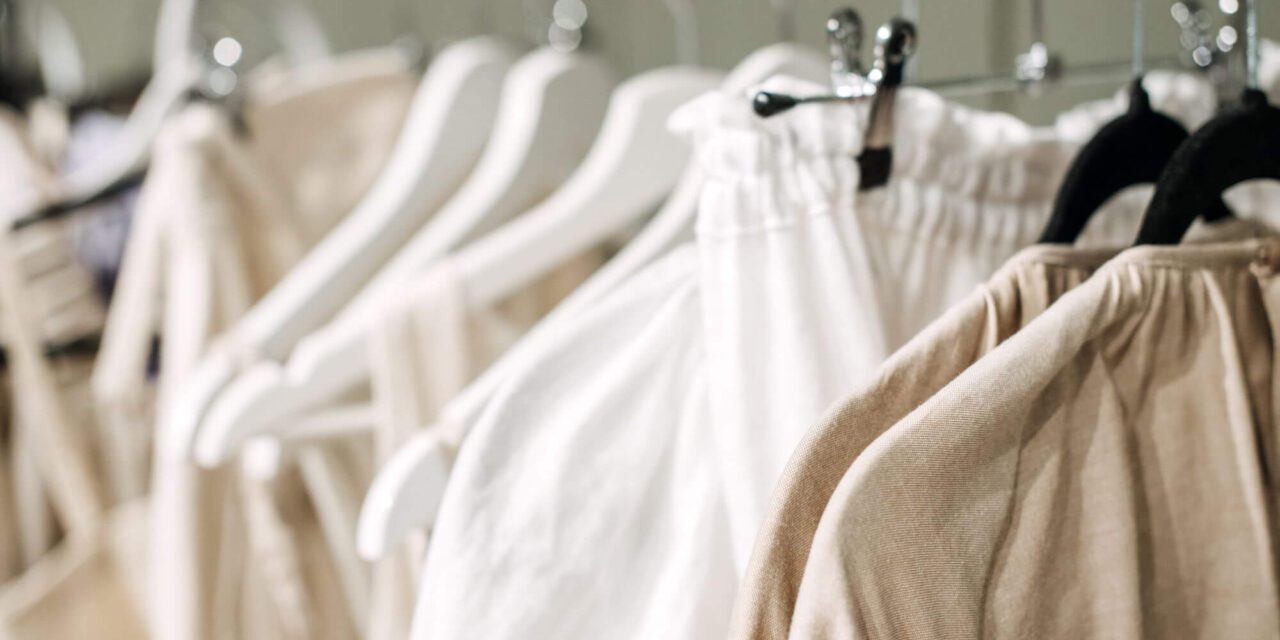
In a world where sustainability is becoming more and more important, there is a noticeable change in the fashion industry toward environmentally responsible techniques. Utilizing sustainable fabrics is a key component of this approach. This in-depth study seeks to explore the world of eco-friendly fabrics, illuminating the different sustainable fabric options that are currently accessible to buyers.
Understanding the environmental repercussions of traditional textiles is paramount to appreciating the need for eco-friendly alternatives. Conventional fabrics, with their resource-intensive processes and chemical-laden production, contribute significantly to pollution, deforestation, and a substantial carbon footprint.
Contents
1. Organic Cotton
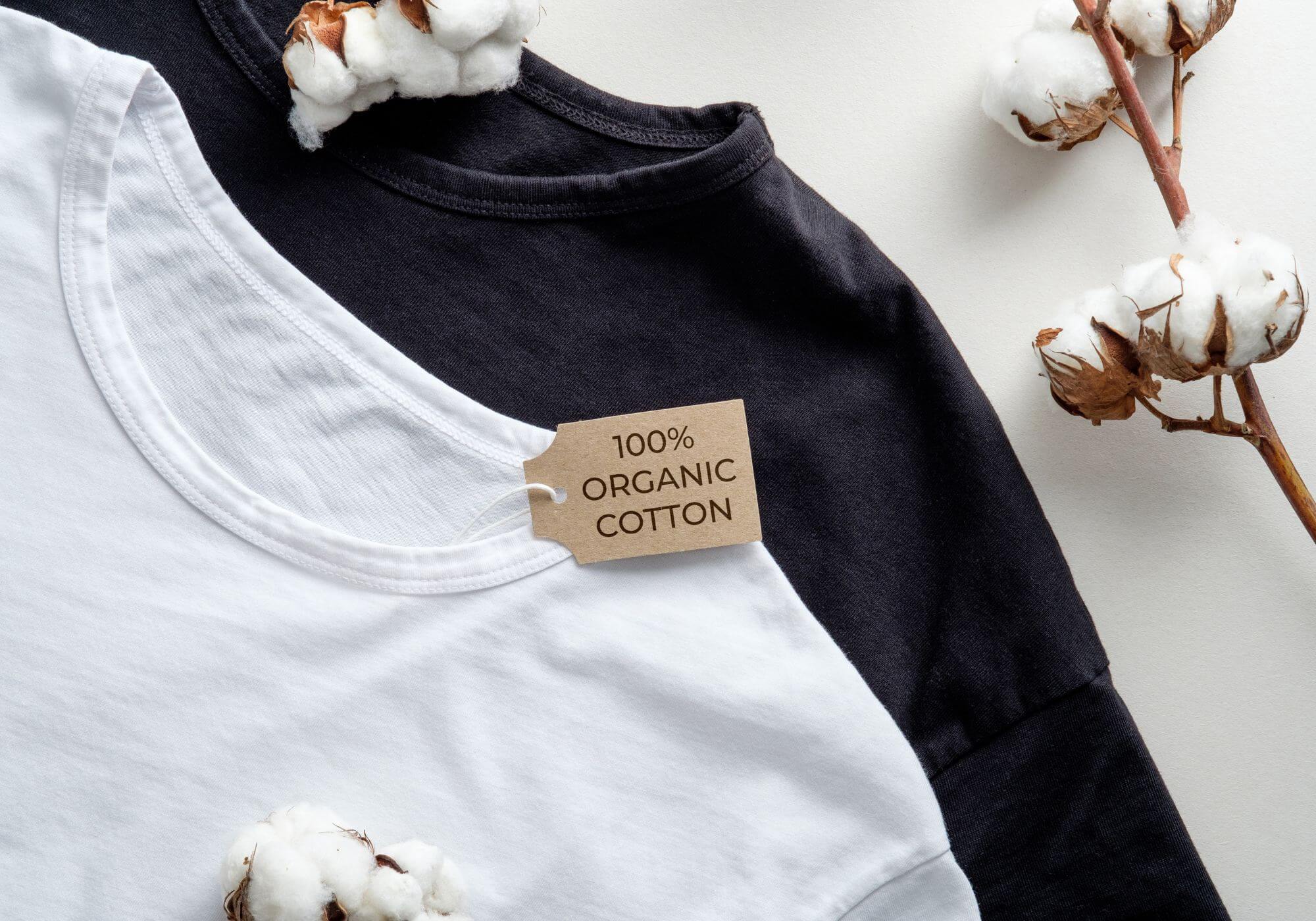
White Gold with a Dark Side
Cotton is a material that is extensively used in our daily lives. It is the material we wear, the canvas on which we sleep, and the towel we use after taking a shower. But this seemingly ordinary item has a sinister underbelly. Conventional cotton production practices have serious negative effects on the environment and society for the sake of profit.
Conventional cotton farming, sometimes known as “white gold,” has generated concerns about its effects on the environment and its people, particularly in low- and middle-income countries. For good reason, cotton is frequently referred to as a “thirsty crop”. Unsettling facts about water usage, pesticide use, and social fairness are exposed by the complex process of growing, harvesting, and producing cotton.
The Impacts of Cotton Production
Water: Cotton and water have a complex connection. Contrary to popular belief, which states that a single cotton t-shirt uses 2,700 liters of water, the situation is more complex. The average amount of blue water (irrigation) used for cotton lint worldwide is 1,900 liters per kilogram. However, cotton’s “thirstiness” is not a straightforward calculation. Water management is made more difficult by the fact that the crop is frequently grown in areas with limited water resources. The essay investigates how cotton farming can change to a more sustainable method with the right assistance for farmers.
Pesticides: Because conventional cotton farming uses a lot of pesticides, the environment is deteriorating. Resistance to these chemicals is constantly developing in pests, which increases the need for pesticides and drives up farming expenses. In addition to its negative effects on the environment, pesticide poisoning directly endangers nearby communities. Runoff contaminates water and food supplies, leading to sickness and, in severe situations, birth defects.
Labor Conditions: Cotton is hand-picked in a lot of low- and middle-income countries, frequently including children in physically taxing labor. Although there has been a decline in child labor and forced labor, there are still worries about working conditions. Examining the fine line between maintaining livelihoods and moral work standards helps to highlight the industry’s persistent problems.
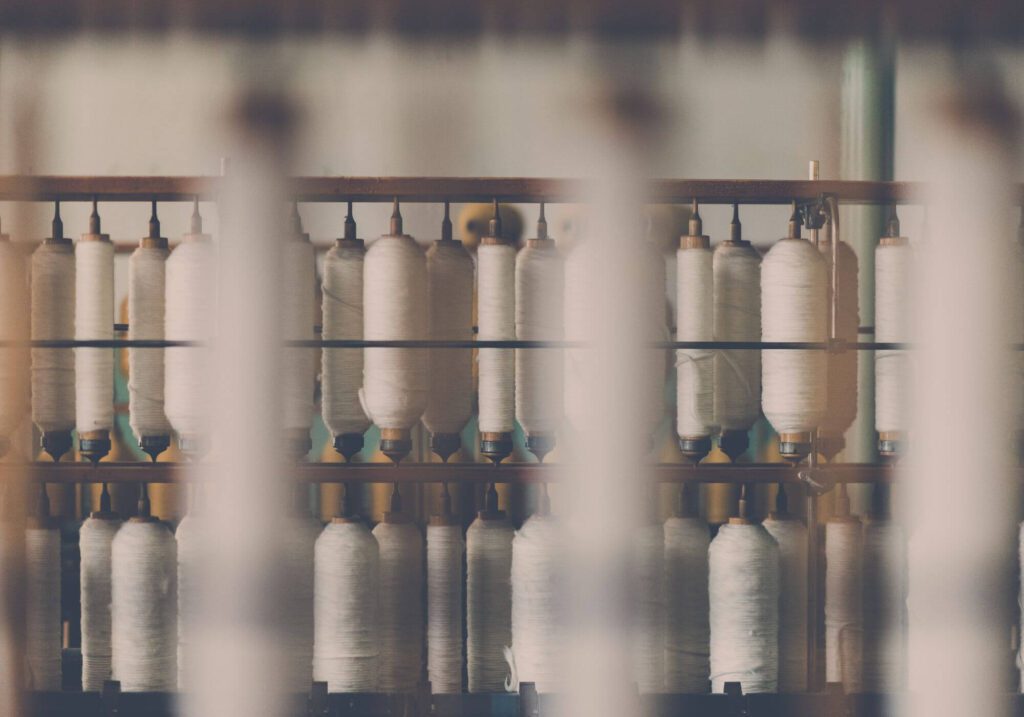
Is Organic Cotton a More Ethical and Sustainable Solution?
Organic cotton surfaces as a more sustainable substitute for conventional cotton in response to the ethical and environmental issues it raises. Organic cotton is produced using methods that place a high value on resource conservation and environmental sustainability. It is free of pesticides and genetically modified seeds. The essay explores the advantages of organic cotton, emphasizing how it protects communities, enhances worker health, and maintains the fertility of the soil.
The Global Organic Textile Standard (GOTS) and other organizations are essential in guaranteeing that organic textiles meet the highest environmental and social criteria. These certifications provide assurance that the entire supply chain respects the environment and its people, from safe working conditions to equitable pay rates.
Points to Consider: The Imperfections of Organic Cotton
Even though organic cotton is a shining example of sustainability, there are drawbacks. Reduced fiber yields mean that more plants and land must be farmed. Furthermore, chemically intensive procedures may be used during the processing and dyeing stages if GOTS certification is not obtained. In addition to urging readers to question sustainability claims, the piece highlights the dangers of “greenwashing” and stresses the importance of accountability and openness in the fashion business.
Choosing a Sustainable Path
A major step toward a more sustainable and ethical fashion sector, the organic cotton trend comes at a time when customers are looking for items that reflect their values. Customers may experience a change as more brands begin to offer organic options. The essay does, however, warn readers about the dangers of greenwashing and remind them that real sustainability necessitates tackling a range of challenges beyond organic production.
Organic cotton is a great substitute for conventional cotton if you’re looking for ecological and ethical options. Customers may enjoy safer apparel while simultaneously lessening the harm done to the environment and its inhabitants by making educated decisions. One organic fiber at a time, the sustainable fashion business is steadily progressing toward more responsibility and ethics.
2. Tencel (Lyocell)
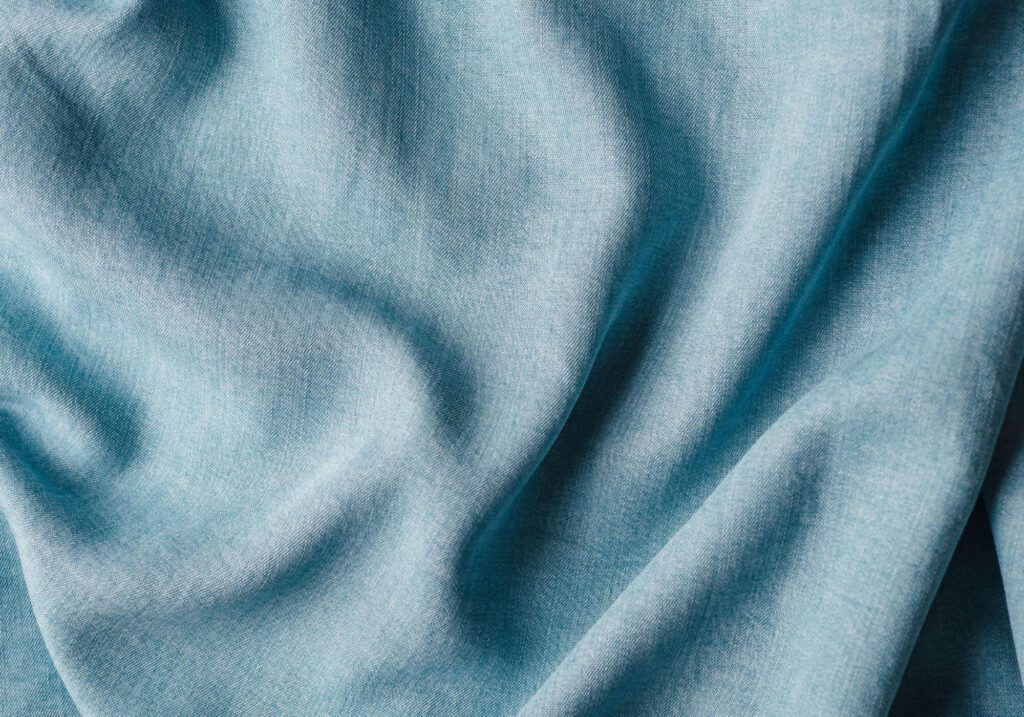
Customers are looking for textiles that are more than just stylish and comfortable as more people become aware of the environmental impact of fashion decisions. A strong force for lessening environmental impact and promoting moral business conduct is emerging in the form of sustainable fashion. Eco-friendly and adaptable, TENCEL Lyocell fabric has become a top option for brands and customers who care about the environment.
Lenzing AG, an Austrian firm, owns the TENCEL brand, which consists of two fibers: TENCEL Lyocell and TENCEL Modal. Here, we’re concentrating on TENCEL Lyocell. TENCEL Lyocell is a well-liked option for ethical apparel businesses because of its low weight, adaptability, and range of uses, which include undergarments, sportswear, and casual wear.
How is TENCEL Made?
TENCEL Lyocell is a synthetic cellulosic fiber that is similar to modal and viscose. In order to produce fiber strands, wood pulp is dissolved in a solvent and then run through a spinneret mixture. The fibers produced by this solvent-spinning method can be spun into yarns, which can then be knitted or woven into fabric. Understanding the process’s environmental impact is crucial to comprehending TENCEL’s sustainability.
Environmental Impact of TENCEL
Compared to some fabrics, TENCEL Lyocell is a more eco-friendly choice, but it doesn’t meet the low-impact requirements of premium materials like organic linen or recycled cotton. TENCEL performs better during production than regular cotton in terms of energy and water use. Because it comes from plants, its fiber decomposes naturally. When discarding clothing, care should be taken to make sure synthetic fibers aren’t mixed in.
Further demonstrating TENCEL’s dedication to sustainability is the use of REFIBRA technology, which combines recycled cotton waste with wood pulp. This creative method improves the fabric’s eco-credentials while reducing its negative effects on the environment.
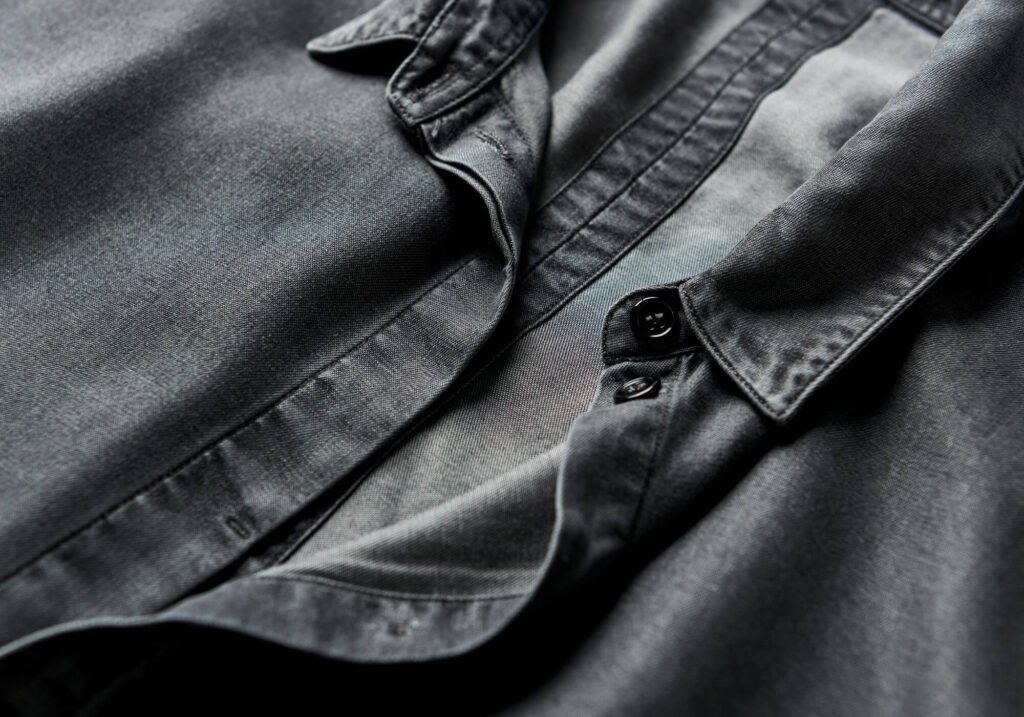
Contrasting TENCEL with Traditional Viscose/Rayon
There are two key ways that TENCEL Lyocell differs from other wood fiber fabrics. First, TENCEL replaces the chemically demanding sodium hydroxide used in conventional viscose manufacture at the chemical treatment stage with the NMMO process. Lenzing AG claims that this closed-loop solvent system reduces environmental damage with a solvent recovery rate of 99%.
Second, TENCEL addresses worries about deforestation by sourcing wood sustainably. On the other hand, a large amount of the viscose and rayon used in fashion comes from pulp that comes from old and endangered trees. TENCEL is committed to reducing its influence on the world’s forests, as evidenced by its procurement from PEFC or FSC tree plantations that are responsibly maintained.
Versatility That Speaks Volumes
TENCEL fabric is the epitome of adaptability. Its versatility varies according to the length of the fiber selected during production, from a cottony feel to a silky touch. Because of its adaptability, TENCEL can be used for a wide range of clothing applications, including activewear, flowing dresses, casual wear, and intimate apparel.
TENCEL has remarkable absorption properties; it outperforms cotton by a factor of 50%. Because of its breathability and resistance to the growth of odorous germs, it is the perfect material for active wear. These qualities are especially useful during strenuous physical activities like hot yoga or gym workouts.
Worth the Investment
Although TENCEL clothing may cost a little more than traditional textiles, the actual value of this investment becomes apparent when looking at it over an extended period of time. The extra expense is indicative of a dedication to sustainability, robustness, and excellence. Because of TENCEL Lyocell’s natural durability, clothes last longer and require fewer replacements over time. Furthermore, TENCEL’s biodegradability and reduced environmental effects during manufacture support a more conscientious and sustainable fashion industry. Customers who choose TENCEL are doing more than just buying clothes; they are redefining the value of their fashion choices and helping to create a greener future.
In the ever-evolving landscape of sustainable fashion, TENCEL stands as a testament to the harmonious blend of style, comfort, and conscience, beckoning consumers to make choices that resonate with the values of a greener tomorrow.
3. Hemp

Hemp is a hidden gem in the fabric world, sometimes overlooked in favor of more traditional options. But now is the moment to reveal this remarkable textile’s layers. Let’s start by clearing up a frequent misconception: hemp doesn’t make you high. In contrast to its botanical relative, marijuana, hemp has very little of the intoxicating ingredient THC. That being said, although it is legal to smoke hemp, the only high you’ll get will be from choosing eco-friendly clothing.
Proud of its durability and ability to withstand water rot, hemp has a long history intertwined with the advancement of humankind. Hemp has left an enduring impression on our history, from being used to rig the sails and ropes that escorted Columbus to the New World to serve as a medium for writing the US Constitution.
The Alchemy of Hemp into Fiber
The process of turning hemp into fiber provides evidence of sustainable business methods. The “getting” method is applied to hemp, a ‘bast’ fiber made from the flexible stems of Cannabis sativa. The most environmentally benign way of extracting the fibers is through paddock or “dew” retting, which involves removing the outer bark and woody core. Using naturally occurring bacteria over a few weeks, this conventional method restores 60–70% of the nitrogen to the soil, establishing ideal growing conditions for future crops. The foundation of Citizen Wolf’s dedication to producing sustainable hemp fabric is this technique.
Water retting, which was formerly carried out in lakes or rivers but is now done in tanks, and chemical retting, which uses enzymes and is the quickest but least environmentally friendly choice, are two further retting techniques. The fibers are mechanically spun into a continuous thread with little environmental impact after retting, and then they are knitted or woven into what is often regarded as the most sustainable fabric in the world.
Features of Hemp Fabric
Because of its remarkable properties, hemp cloth is a favorite among those who care about the environment. It has three times the tensile strength of cotton, is highly UV-resistant, and is naturally antibacterial. Because of its strong tensile strength, hemp ages similarly to linen but softens more slowly. By trapping a layer of air between your skin and the garment, it’s breathability and thermoregulating qualities ensure comfort, keeping you warm in the winter and cool in the summer. Hemp is biodegradable, just like any other natural material.
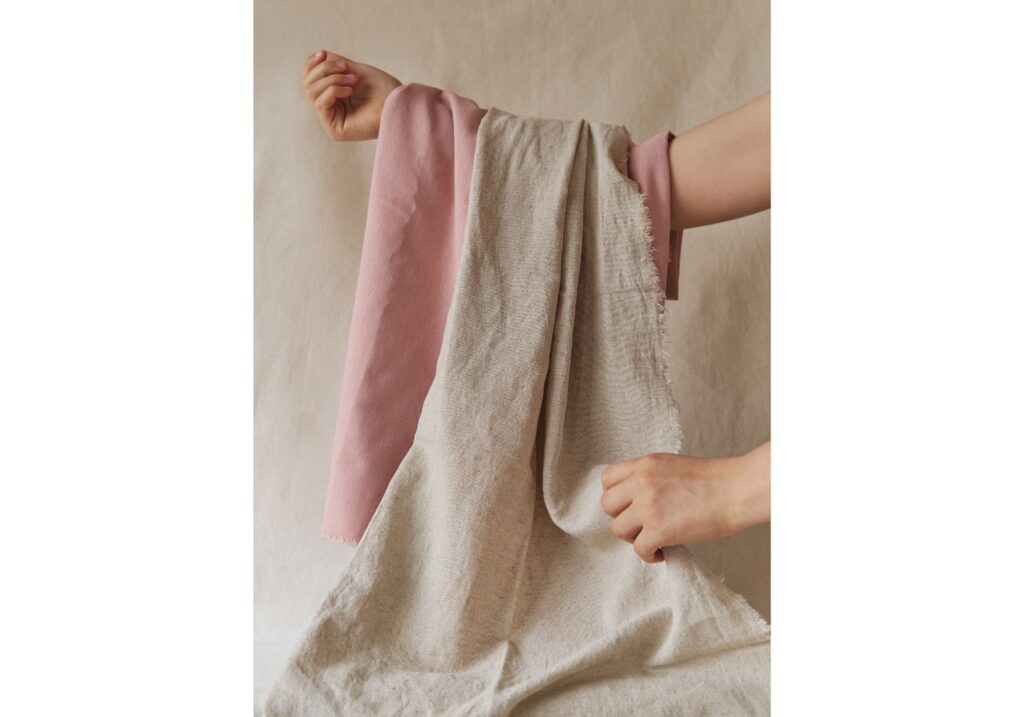
The Agricultural Marvel of Hemp
Hemp’s agricultural prowess positions it as the lovechild of a farmer and an environmentalist. In the quest for sustainability, hemp shines in several key aspects:
- Water Efficiency: Hemp is a drought-resistant crop that thrives in various soil and climate conditions, using up to four times less water than cotton. Its overall water usage, when accounting for processing, can be up to four times less than cotton, a critical consideration in a world grappling with water stress.
- Zero Chemicals: Hemp is naturally organic, requiring no herbicides or pesticides due to its dense growth, which naturally deters pests. Its organic nature extends to every part of the plant, creating a ‘nose-to-tail’ use that includes fine-quality paper, building materials, and superfood-grade seeds.
- Zero Waste: Every component of the hemp plant finds a purpose, from the bast fibers for textiles to the woody core for building materials and the seeds for nutritional value. This comprehensive use showcases hemp as an environmentally friendly, zero-waste resource.
- Incredible Yield: Hemp’s efficient use of land and rapid growth, maturing in just 100 days compared to six months for cotton, resulting in higher fiber production per acre. Hemp produces up to 250% more fiber than cotton and up to 600% more than flax (linen), emphasizing its yield advantage.
- Soil Health: Hemp’s robust root system prevents erosion, aerates the soil, and returns nutrients to the ground, making it an ideal rotation crop for sustainable farming. Its ‘phytoremediation’ ability further enhances soil health by locking up pollutants, leaving the soil in better condition than before.
- Carbon Positivity: High-biomass crops like hemp excel at sequestering carbon through photosynthesis, trapping 1.63 tonnes of CO2 per tonne of hemp harvested. This efficiency exceeds the carbon capture of fast-growing Eucalypt forests by 230%.
Challenges and the Path Forward
Despite the many environmental advantages of hemp, there are still issues in the textile sector. Pure hemp fabric has a unique smell and isn’t naturally white like cotton; thus, extra bleach is needed during processing. The supply shortage, however, is the biggest obstacle. Nowadays, less than one million acres of industrial hemp are grown worldwide (compared to 33 million acres of cotton), with the majority of hemp coming from China or Romania.
Paving the Way to a Sustainable Future
Despite being heralded as a miracle plant, hemp’s promise is yet unrealized, even though it represents a sustainable future. The secret is in the decisions made by consumers, and as the market for eco-friendly textiles expands, so does the chance for hemp to become a main player. Despite ongoing difficulties, hemp is a shining example of sustainability due to its special combination of environmental advantages, including soil health, water efficiency, and carbon reduction. Customers who choose hemp are promoting a textile revolution in which the most environmentally friendly fabric becomes the preferred fabric, helping to create a greener future. Cast your financial ballot in favor of hemp and become the agent of change you wish to see in the sustainable fashion industry.
4. Recycled Polyester
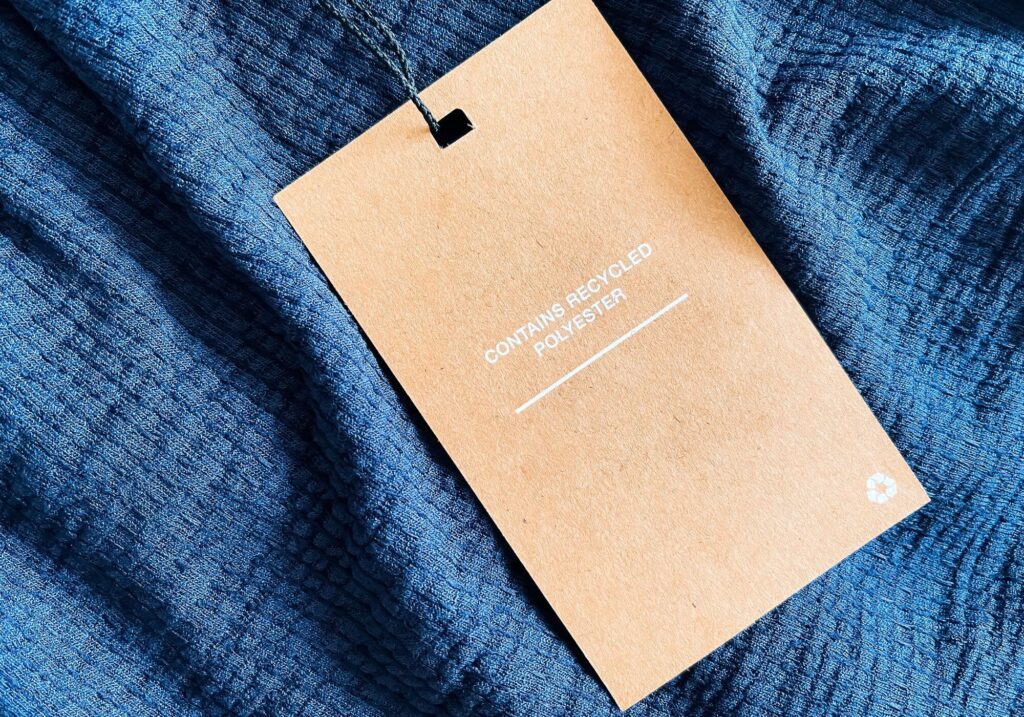
Recycled polyester (rPET) has become a major participant in the rapidly changing field of sustainable fashion, turning plastic waste into a practical substitute for textiles. But as rPET becomes more and more popular worldwide, it’s critical to understand its complexities and determine its actual environmental impact.
The Environmental Considerations of rPET
Adopting rPET entails a set of guidelines for both brands and conscientious customers. For example, choosing rPET for items like bags or shoes that don’t need to be laundered frequently is a good idea because of the shedding of fibrous microplastics after washing, which reduces the possibility of microfiber pollution.
In order to effectively tackle the problem of textile-to-textile recycling, a move toward long-lasting goods that are reusable and repairable is advised. In order to demonstrate their commitment to the environment, brands should also look for completely circular fiber substitutes and concentrate on using less polyester overall in their collections rather than just recycled polyester.
The Positive Aspects of rPET
The primary source of polyester, a major force in the textile industry, is petroleum-based. Since polyester accounts for about 52% of the industry’s fibers, the use of rPET offers an instant solution to the depletion of petroleum resources. A 2017 life-cycle analysis found that the production of rPET results in an astounding 79% reduction in carbon emissions when compared to the production of virgin polyester.
Moreover, recycling used plastic bottles into useful items like swimwear and fleece jackets helps to cut down on the amount of plastic debris that ends up in landfills and waterways. Customers can track recycled PET from the time bottles are collected until the finished product is delivered, thanks to some manufacturers’ transparency across the value chain, such as Repreve.
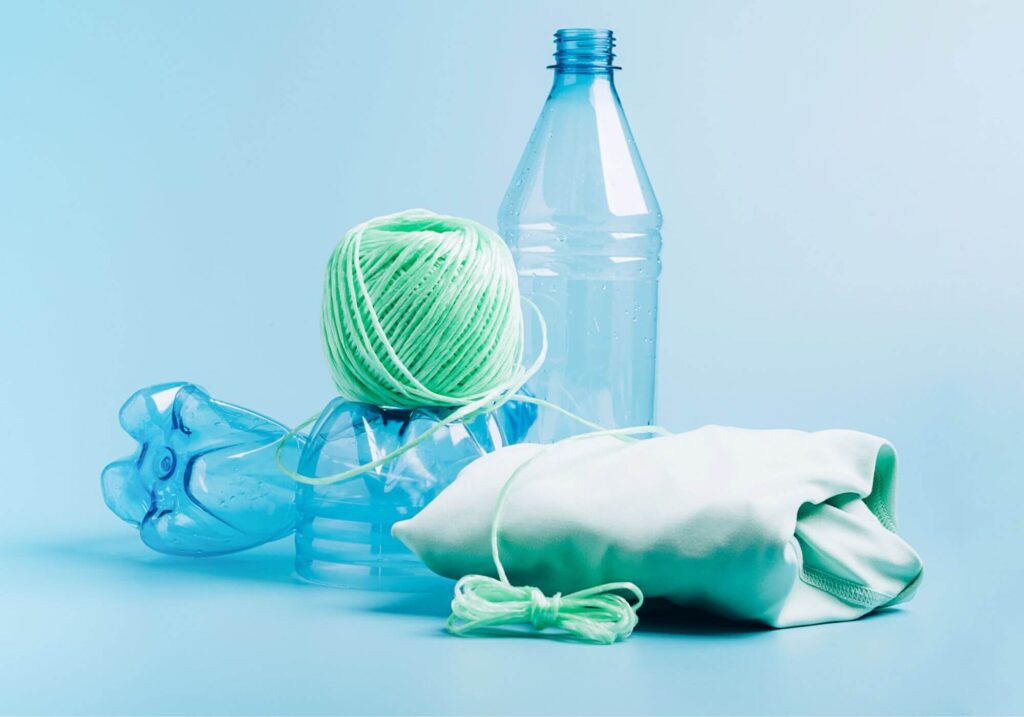
Microfiber Dilemma and Limitations of rPET
rPET has drawbacks despite its advantages for the environment. Because fabrics, especially polyester, shed fibers when they are washed, the problem of microfiber contamination still exists. Recycled fibers’ ability to reduce microfiber release is dependent on a number of variables, including yarn thickness, elongation, and twist, making it a challenging issue to solve. In order to reach definitive conclusions, companies such as Patagonia and The North Face support standardizing the microfiber testing process.
One popular procedure for turning plastic bottles into rPET is mechanical recycling, yet this has drawbacks. This type of fiber cannot be mechanically recycled again without suffering a major loss in quality. Scalable technology for recycling used rPET clothing into new ones is still in its infancy, notwithstanding the potential of chemical recycling.
Balancing Impact and Awareness
Recycled polyester presents a sustainable option for the fashion industry, but caution is necessary. Making durable goods that are reusable and repairable a top priority, switching from virgin polyester to recycled ones, and investigating completely circular fiber substitutes are all worthwhile endeavors. It’s important to acknowledge the drawbacks of rPET, such as microfiber creation and difficulties with recycling, and to avoid exaggerating its benefits. A complete approach that includes a reduction in the usage of polyester and a variety of sustainable materials will be essential as the industry develops to have a long-lasting positive influence on the environment.
5. Bamboo
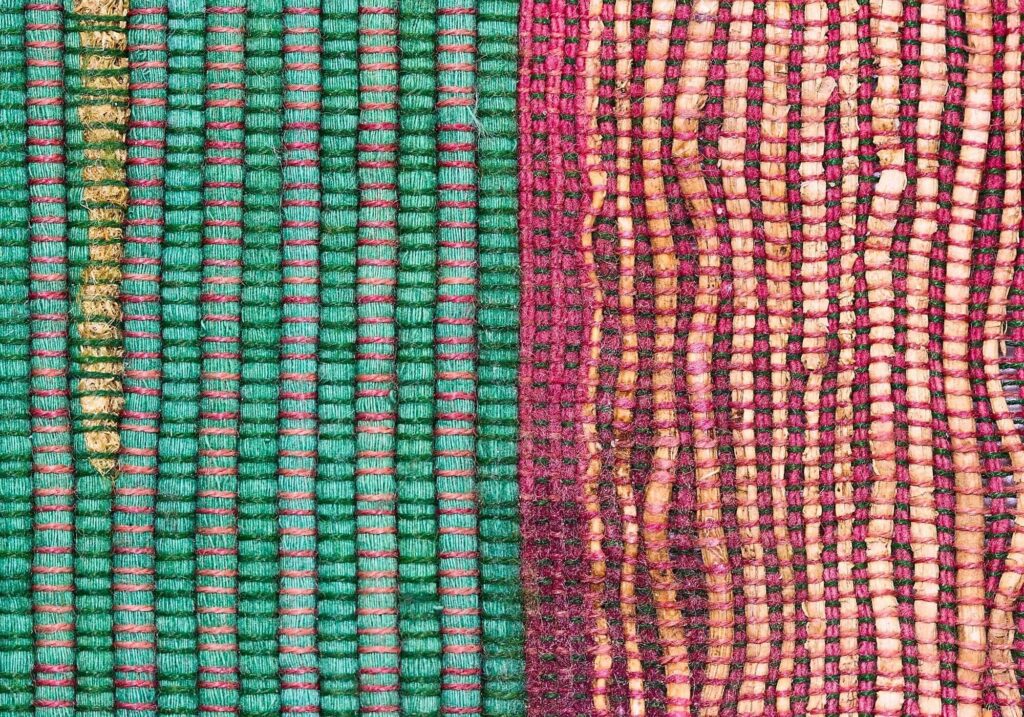
Bamboo fabrics, heralded as an eco-friendly choice, have been woven into the fabric of human civilization for thousands of years. In the contemporary era, determining whether a bamboo-based garment genuinely contributes to a sustainable planet or succumbs to greenwashing is no easy task. The intricate tapestry of bamboo’s environmental impact unfolds as we delve into the realms of its cultivation and fabric creation.
Bamboo, a rapidly growing grass, has gained acclaim as an “eco-crop” with diverse applications spanning construction, homewares, and fabrics. However, amidst claims of bamboo’s sustainability, UV protection, and antibacterial properties, the reality is a nuanced narrative.
The Bamboo Growth Dilemma
The voyage commences with bamboo’s auspicious beginning. Bamboo is a fast-growing, self-regenerating grass that doesn’t need fertilizer and can survive on its own roots, so it doesn’t need to be replanted. Bamboo farming offers distinct benefits over cotton farming, which uses a lot of water and pesticides. However, a warning is necessary because the expansion of bamboo, especially in China, where most of it is grown, raises questions about ethical harvesting methods, possible land destruction, and pesticide use. Though there are still unanswered concerns, the Chinese government’s recent efforts to restrict intense bamboo growth methods indicate progress.
Fabrication: The Bamboo Conundrum
Bamboo gets off to a lucky start as the voyage starts. Bamboo is a fast-growing, self-regenerating grass that can grow on its own roots without the need for fertilizer; therefore, replanting is not essential. Bamboo planting has various benefits over cotton farming, which uses a lot of pesticides and water. However, prudence is necessary because the growth of bamboo, especially in China where it is most widely grown, raises questions about the use of pesticides, moral harvesting methods, and possible loss of land. Even though issues remain unresolved, the Chinese government’s recent attempts to limit intense bamboo growth practices show improvement.
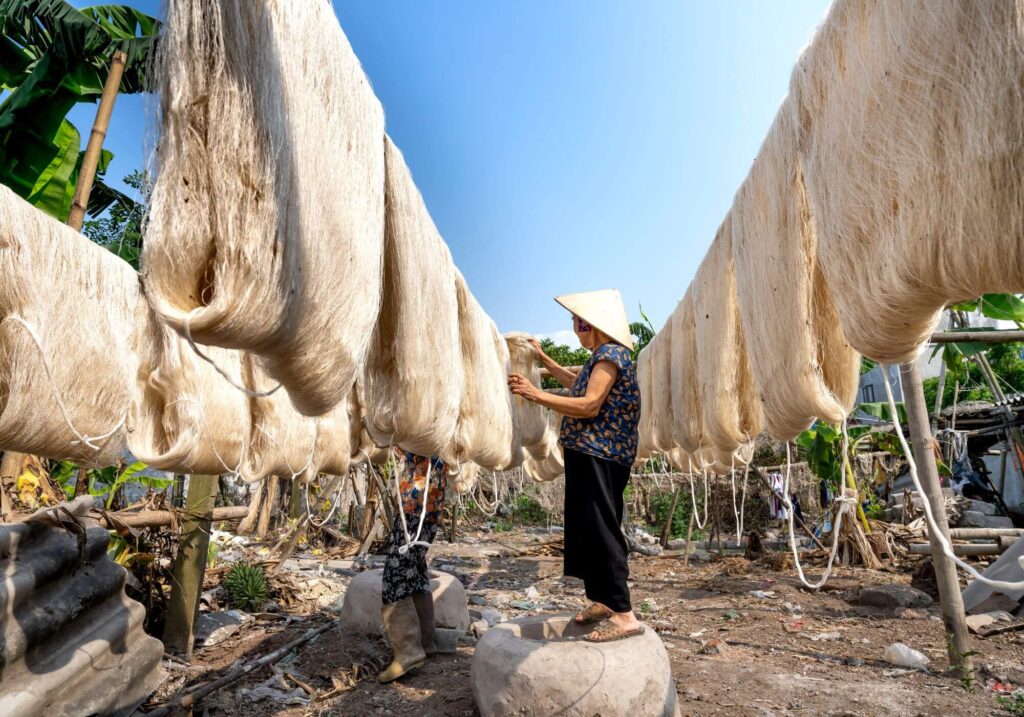
Bamboo Rayon and its Challenges
With the development of bamboo rayon, which is produced through a chemical process akin to converting wood chips into rayon, the narrative surrounding bamboo’s sustainability undergoes a dramatic change. Bamboo cellulose is dissolved in a chemical solution to create a pulpy substance, which the viscose process subsequently turns into fibers. Chemicals like carbon disulfide and caustic soda, which are harmful to the environment and human health, are used in this process. Despite recent advancements in their operations, wet processors continue to face issues with waste treatment.
The Sustainability Verdict
Is cloth made of bamboo truly sustainable? The solution depends on a careful analysis. When grown properly, bamboo can be a crop that is sustained. Although bamboo fabrics—which are frequently made of rayon—go through a rigorous chemical-intensive production process, these advancements in chemical management signify progress. Given transparent sourcing, bamboo fabrics are a better choice than polyester and regular cotton.
The search continues for low-cost, eco-friendly processes to produce silky, smooth bamboo textiles. One bamboo thread at a time, the ethical consumer is asked to be alert, support transparent firms, and navigate the ever-changing world of sustainable fashion in the midst of ongoing innovations.
6. Econyl (Recycled Nylon)
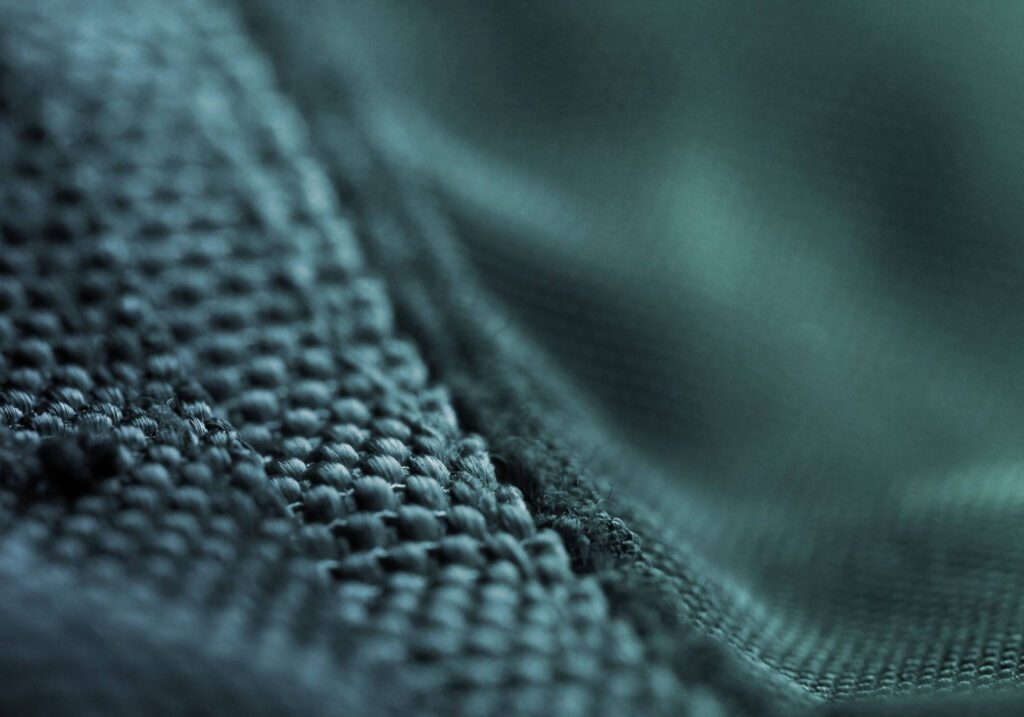
Once a necessary tool for fishermen, fishing nets now pose a serious risk to marine life. A dismal image is painted by the unsettling entrapment of whales, dolphins, sharks, turtles, and other magnificent animals in abandoned nets. But out of the problem, there is a glimmer of hope since fashion has the power to protect aquatic biodiversity and lessen its negative effects on marine ecosystems.
Fashion as a Marine Conservation Ally
Leading companies, like ecological trailblazer Stella McCartney and surf icon Kelly Slater’s Outerknown, are guiding the sector toward a revolutionary solution. Reusing abandoned fishing nets and marine trash to create ECONYL, a recycled nylon fabric that produces high-quality clothing while also taking proactive steps to lessen the strain on the seas and their people, is the key.
Decoding ECONYL: A Regenerative Marvel
The Italian company Aquafil created ECONYL, which sets out to recycle synthetic waste. Fishing nets recovered from oceans, industrial plastic, and leftover fabric are all used to make the cloth. These elements are recycled and renewed into a flawless nylon yarn that closely resembles virgin nylon thanks to an inventive technique. Comparing the regeneration process to conventional nylon production processes, it is a closed-loop system that uses less water and produces less waste thanks to its six critical steps. Waste collection, cleaning, shredding, depolymerization to remove nylon, polymerization, conversion into yarn, and final reintroduction into textile products are all included in the process.
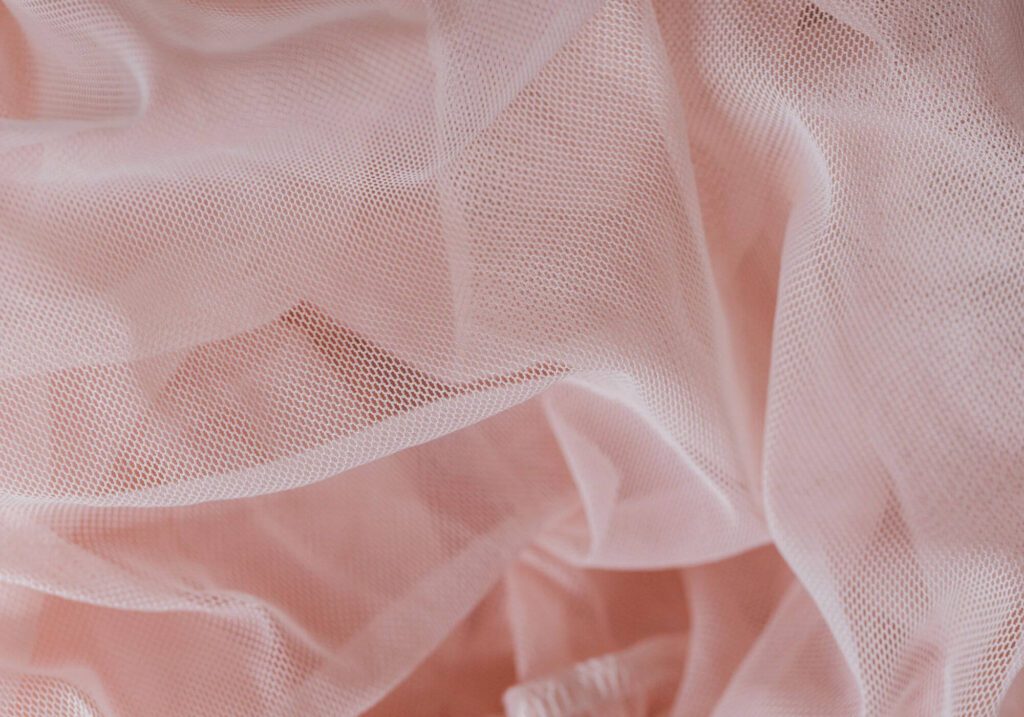
Environmental Impact and Eco-Friendly Advantages
In contrast to virgin nylon, ECONYL is a sustainable substitute that mitigates the negative environmental effects of conventional production techniques. The production of nylon using conventional methods uses a lot of water and produces a lot of nitrous oxide, which is 10 times more potent than carbon dioxide as a greenhouse gas. Furthermore, the non-biodegradable nature of nylon adds to the startling statistic of 40% of plastic trash that comes from humans ending up in the oceans. It becomes clear that ECONYL is a strong effort to recycle waste materials, reduce pollution, and promote a circular economy.
The Microfiber Predicament
Although ECONYL is a positive step toward environmental care, there is still a subtle problem with microfibers. These tiny plastic particles—which are included in synthetic fibers like ECONYL—need to be carefully considered. Users need to take precautions to reduce the discharge of microfibers, even with their environmentally friendly features. Customers can maximize the environmental benefits of their ECONYL goods by using wash bags or filters in washing machines and choosing ECONYL products that require little washing, such as shoes and swimsuits. The fashion industry’s adoption of innovations such as ECONYL makes the transition to sustainable methods not only a noble endeavor but also a shared duty to protect our world and oceans.
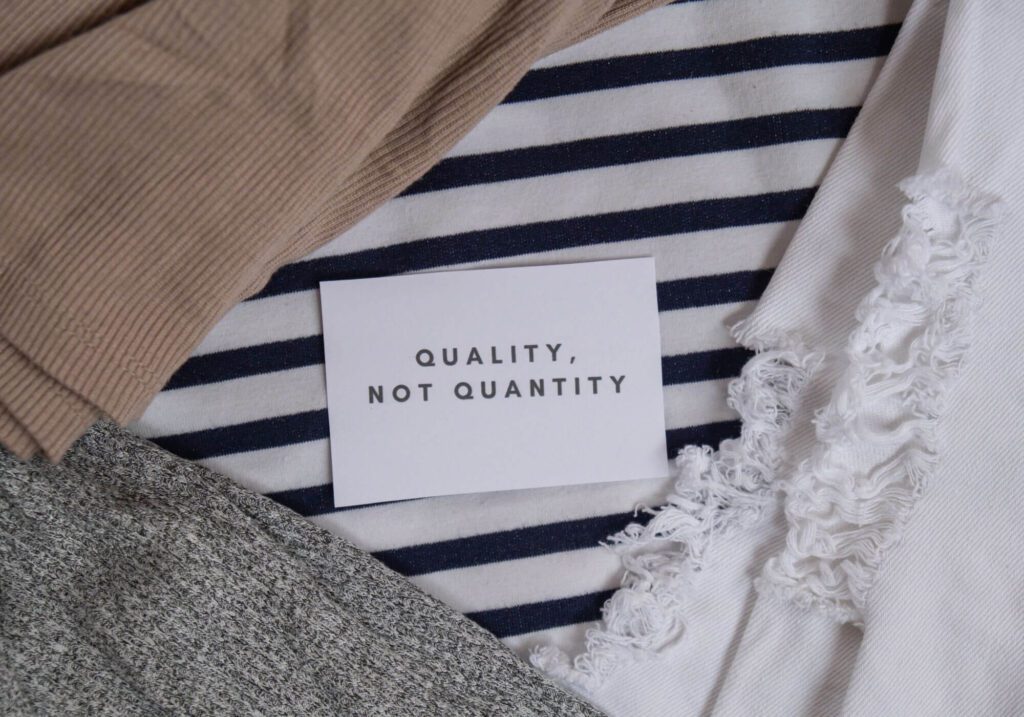
The growing awareness of customers’ environmental impact is driving the demand for eco-friendly materials. From organic cotton to Econyl, this guide has given a thorough review of many sustainable fabric options. We can help create a more sustainable and ethical fashion business and clear the path for a cleaner and greener future by choosing our clothing with knowledge.
In summary, the age of environmentally friendly materials is here, and our decisions as buyers have a significant influence on how fashion develops in the future. Choosing sustainable fabrics helps us lessen our influence on the environment and advances the larger goal of an industry that is more accountable and moral. The transition to an eco-friendly wardrobe is a group effort to create a more sustainable and greener society, not just a personal one.


